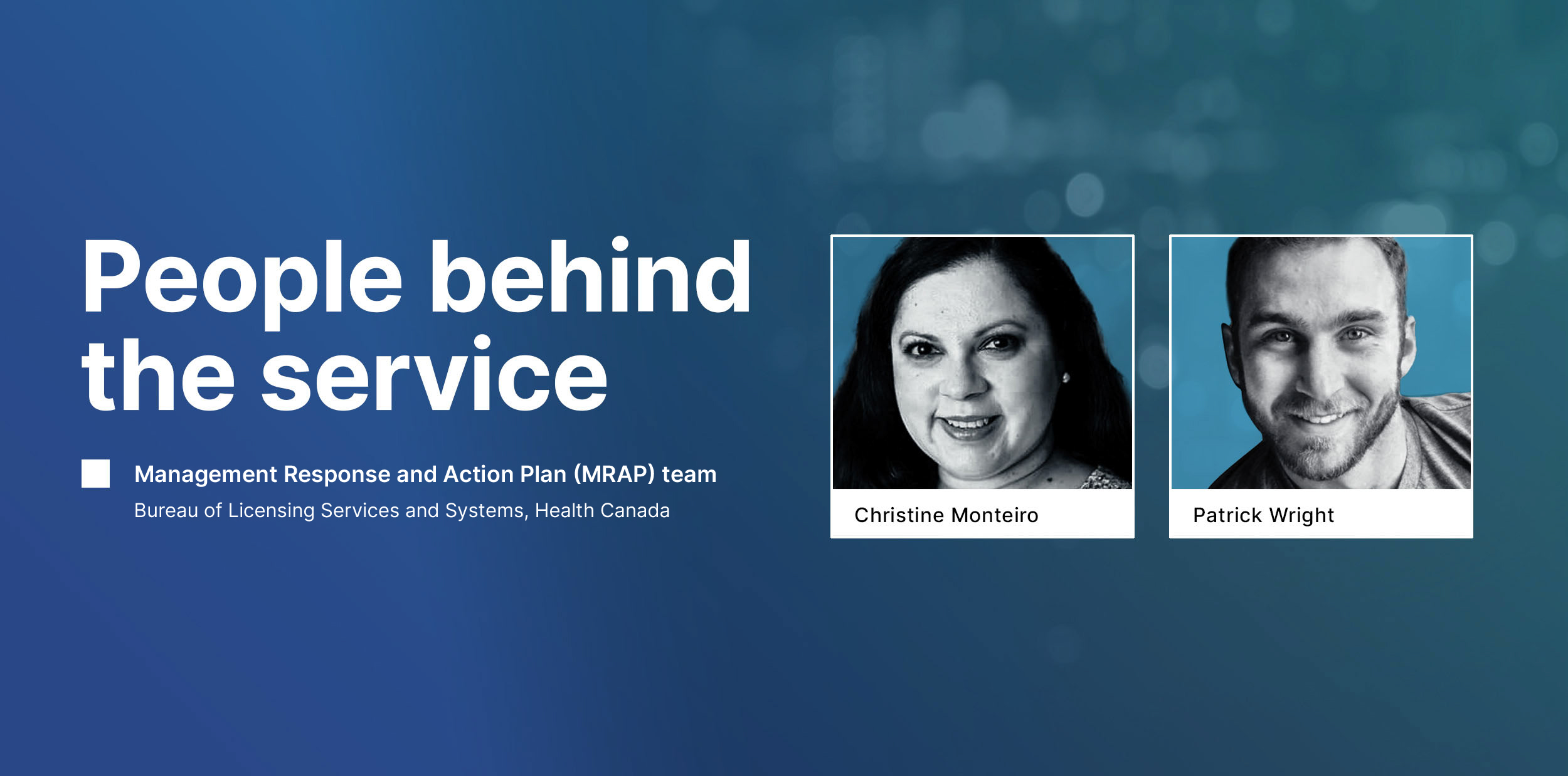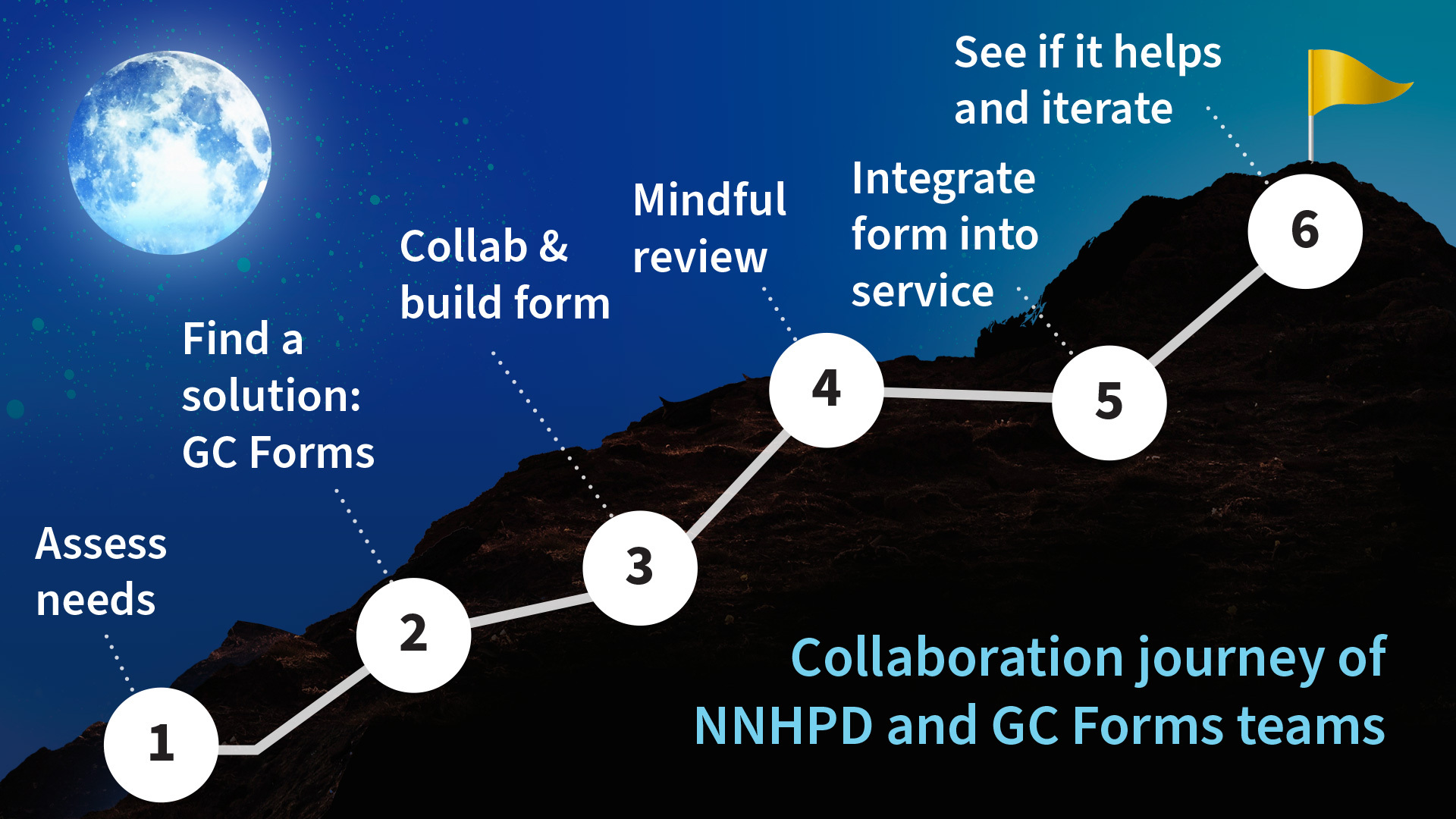How GC Forms can help collect data for public services

Odds are, you’re one of the 71% of Canadians who have used, or are currently using, natural health products – like herbal remedies and vitamins (source: Health Canada).
The Natural and Non-prescription Health Products Directorate (NNHPD) at Health Canada works to ensure that both people living in and visiting Canada have access to a wide range of Natural Health Products (NHPs) and non-prescription drugs. It does this by authorizing products that meet safety, efficacy, and quality standards.
For those not familiar with natural health products, Health Canada’s regulations (which began in 2004) define them as:
- Probiotics;
- Herbal remedies (like ginger to help relieve digestive upset);
- Vitamins and minerals (like folic acid for pregnancy);
- Homeopathic medicines; and
- Traditional medicines (like various Chinese and Ayurvedic medicines).
There are a lot of products that classify as NHPs. A new tool the team at Health Canada uses to update products’ statuses on the market is a web form where companies can submit status changes. It was created using GC Forms, so companies don’t experience barriers accessing and submitting the form (it’s accessible, bilingual, and secure).
We interviewed public servants Christine Monteiro (Project Manager) and Patrick Wright (Policy Analyst) to hear about the NNHPD team’s experiences using GC Forms.
Q1: How does the NNHPD team’s work help the public?
Publicly available data
Anyone interested in checking the status of their natural health products can search for information using our public database! It’s called the Licensed Natural Health Products Database (LNHPD) and it has information on all of the natural health products for which Health Canada has issued a product licence.
The database shows how you can identify licensed natural health products by looking for the eight-digit Natural Product Number (NPN) or Homeopathic Medicine Number (DIN-HM) on the label. With the identification number(s), you can find details in the database like the product’s name, license holder and status, medicinal ingredients, and recommended dosage.
Information is power and we want the public to be able to make informed choices about their natural health product use/consumption.
Auditing for gaps to improve our service
In 2021, the Commissioner of the Environment and Sustainable Development (CESD) released an audit report on the NHP program. In response to the audit recommendations, a team was formed to learn more about the gaps identified in the audit, and how they can be addressed.
For example, one of the main audit gaps showed we need to improve our ability to monitor and update products’ market statuses once they’ve been authorized and are on the market. We needed a way for natural health product companies to communicate with our team about this.
One way we’re improving our ability to do this is by implementing a web form for companies to submit updates about their product(s)’ status(es) on the market. We built this form using the Canadian Digital Service’s GC Forms product.
Q2: Why did the NNHPD team choose to work with GC Forms?
Using GC Forms to keep information updated
We chose to work with GC Forms because it was the most readily available and efficient tool to help us improve our ability to monitor and update products’ market statuses. GC Forms helped us gather the appropriate information from applicants to update our public database, providing consumers with updated information on the market status of their natural health products.
When analyzing options to improve our ability to gather market status updates from applicants, we needed a tool that could be implemented efficiently, with low cost and level of effort, keeping resource considerations in mind.
In exploring the use of GC Forms, this tool hit all the right criteria to deliver for our project. It could help us obtain market status information from applicants in an effective and timely manner, without being too resource heavy and with no associated cost (which is great for our budget!).
Q3: Can you describe how you’re using GC Forms?

Alt text: The collaboration journey of the NNHPD and GC Forms teams was 6 steps. First, assess needs. Second, find a solution (GC Forms in this case). Third, collaborate and build the form. Fourth, do a mindful review. Fifth, integrate the form into the service. Sixth, see if the form helps as needed and iterate to improve.
Collaborating with the GC Forms product team at the Canadian Digital Service (CDS) was a great experience and they helped us find a solution to the problem we faced.
Note: Since this collaboration, the GC Forms team created a self-serve tool, enabling users to build their own forms.
Our journey building the market notification web form looked like this:
- Assessing the issue and determining what’s needed in a solution.
To explore our options in creating a web form that would meet our needs, we initially mapped out what our must-have items were (including the information we were looking to obtain from companies submitting their market status updates). This helped us figure out the fields needed on the web form.
- Exploring solutions that address our target issue.
Determining our needs first allowed us to better see what could potentially help, narrowing our search and saving us time exploring products that wouldn’t meet our needs.
Through this exploration, and the power of word of mouth, we came across GC Forms. By already doing the work of determining our needs, the GC Forms team was able to give us guidance on what was feasible, given our short turnaround time. We wanted to get the form up and running as soon as possible, so that companies could submit their status updates for appropriate monitoring.
- Collaborating with the GC Forms team to build our service form.
Once we knew GC Forms could meet our needs, we started collaborating with the team to build our NHP market notification web form. GC Forms provided us with lots of insight on forms creation – like guidance on the flow of our web form, so it was easier for companies to understand and fill out.
- Reviewing the product, being mindful of policy factors and data processing.
To ensure market status updates were being submitted by an appropriate contact, we worked with GC Forms to implement a web form attestation, for the applicant to attest to their regulatory responsibilities. In exploring what was possible, we landed on the use of a checkbox with mandatory contact information. This makes it so we only receive information from appropriate contacts who’ve already been authorized to provide market status updates for the identified products.
In addition to collaborating on the content of the web form, the GC Forms team was also mindful in asking us how the information collected from the web form would be harvested, to advise us how to best handle the output. In analyzing our operational needs, we determined we would use an internal general email inbox.
- Integrating the designed form into our service.
After our data processing chat with GC Forms, we created our general inbox. The GC Forms team was then able to direct the output of each web form submission as a separate email in our general inbox. This allows us to efficiently receive the product market status updates, and enables us to easily monitor the incoming volume.
Once everything was set up and the form went live, we were able to send it to NHP license holders. On July 14, 2022, we sent an email advising them that they can update their product’s market status by completing the new Natural Health Products Market Notification Web Form. We also provided the link to the form on our database, so they can easily find it.
- Seeing if the form’s helping as needed and iterating for improvement.
It’s been about eleven months since our form went live and it’s working well. It was pretty exciting that we started receiving product market status updates from companies on the same day our form launched!
We continue to receive a steady flow of market status updates; we have received updates from over 200 companies. Over time, suppliers will gain experience using the form and we can get a better idea of ways we can improve this service offering.
Q4: What’s a main highlight for the NNHPD team from this experience with GC Forms?
Probably the biggest highlight for our team is that companies haven’t had any issues with using the market notification web form, which is very rewarding! It shows that the effort we put into this solution was worth it.
It was all thanks to the teams’ efforts in:
- Planning and preparing in advance to determine needs;
- Exploring the best use of GC forms for our service and needs;
- Making it user-friendly through intentional design; and
- Gathering product market status information in an efficient way.
For other teams looking to possibly use GC Forms, we highly recommend exploring its features and seeing how it can help. It’s cost-effective and the team will work with you to find the best solution for your needs.
Think GC Forms could help your team? Reach out!
GC Forms can help public servants across the government who work on many different types of services.
Examples of the ways GC Forms are being used:
- Communicating with clients;
- Collecting applicant data (up to Protected B);
- Receiving feedback on a service, event, or campaign; and
- Subscribing people for updates, such as newsletters or new opportunities.
Explore our new tool for building GC Forms (it’s self-serve!) and reach out to us if you have questions.